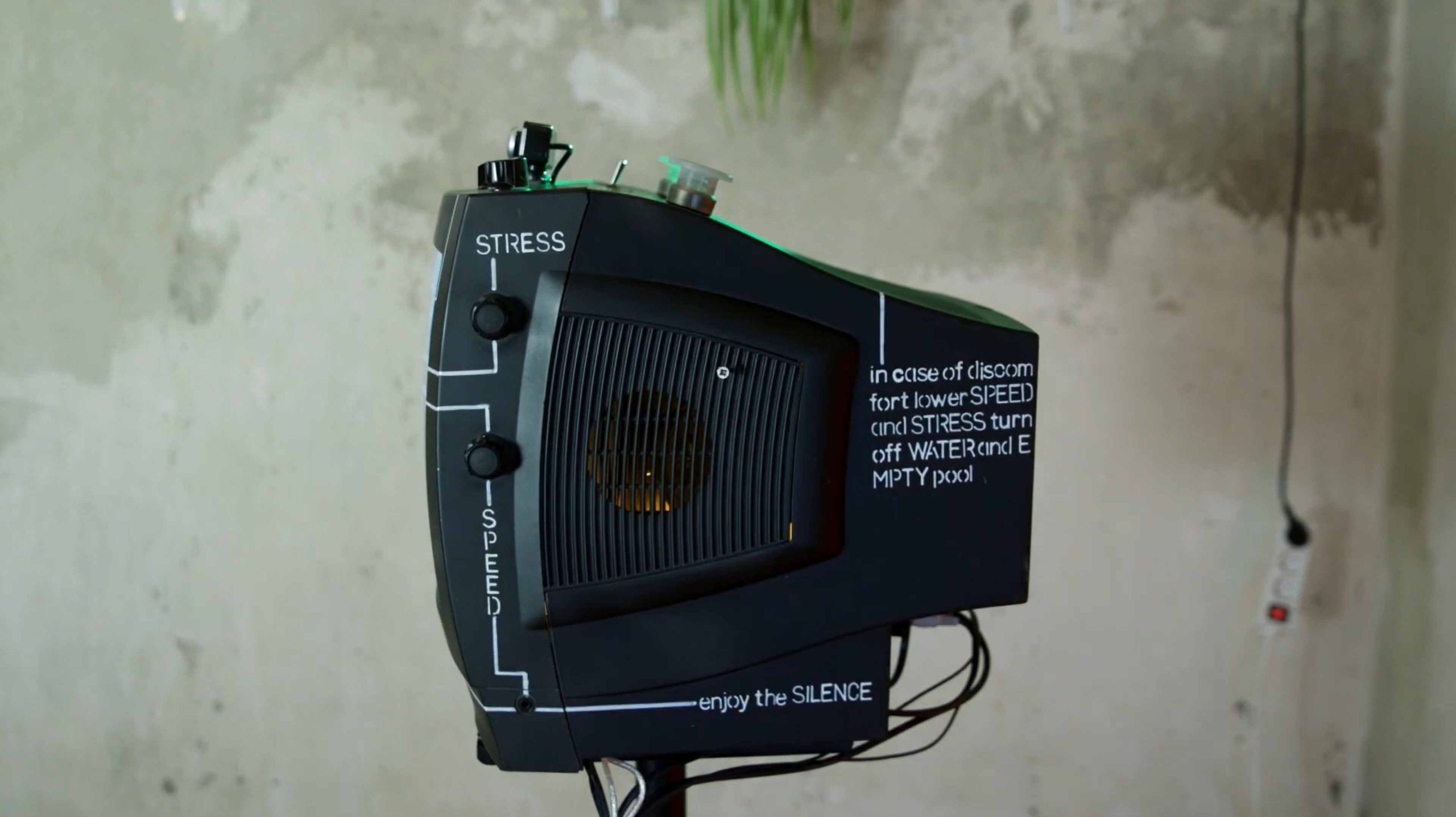tl;dr – An experimental composing algorithm generating beats and melodies in organic ways with a modified old tube TV providing manual control and on-screen feedback. Designed to deliver intuitive access to music for amateurs and everyone who likes to experiment and explore new soundscapes.
-> Watch video
Not easy to start this post, since I could talk for hours about this crazy machine once I get started…. First of all, let me explain what this thing does and how it works. (Might be a bit nerdy, so jump straight to the video, if you’re not into it) It all began with a blurry vision of an algorithm generating beats and melodies not in the way a sequencer does, but rather in an organic manner where each note can be seen as a drop of water falling through a system of layers and eventually transforms into sound and vanishes. Got it?
Guess it’s imprtant to say that each of the 8 layers represents a specific note value, like whole notes, half notes, quarter notes and so on. And this in turn represents the frequency at which notes are skimmed and converted into sound at that particular layer. Means, if there is water (=notes) in the layer, it gives a sound everytime the layer’s metronome strikes. Being transformed into sound, the water drop vanishes and as soon as all drops are gone, that layer remains silent until fresh water drips in.
To keep the music playing there is a continuous inflow into the top layer and some sort of gravity making the water flow downwards from layer to layer. With the top layer representing whole notes and the bottom layer representing 128th notes, the algorithm generates something between meditative lullabies and chaotic machine gun rattle.
To control the output, 2 parameters are of particular importance. These are WATER and FALL, representing inflow and gravity, respectively. By getting the right combination of both, you can either set a stable state where inflow matches outflow resulting in repetitive and catchy beats, but you can as well set highly instable states resulting in transient processes producing chaotic and unpredictable noise.
In the video, you see the WATER and FALL controls on top of the TV. On the screen, a watering can in the upper left corner visualises the WATER inflow while the underlying arrow represents the FALL (“gravity”) parameter by changing its length according to parameter changes. The 8 note layers are visualised by horizontal bars representing each layer’s water level by the bars’ length. To transform water drops into something audible, each layer is assigned to a specific midi note number. Therefore, we get a note sequence output that can be used to trigger any instrument accepting midi.
So this is basically how the algorithm composes and generates note sequences. To get something audible out of it, I usually connect the midi output to an instrument rack in Ableton Live with several chains containing drum racks and synths. On the TV, there is a dial labeled STRESS which I linked to the instrument rack’s chain selector enabling the user to seamlessly travel through various soundscapes. The STRESS parameter, btw, is visualiased by the white bars coninuing the TV housing’s line pattern and extending on the screen while the value increases.
The TV housing is equipped with some more controls to make playing even more fun. For example, the upper left button randomly reassigns note numbers to each layer, resulting in a more or less drastic change of sound. The SPEED dial changes the general bpm value and to finally overdo it I added a camera on top, so you can see your own face blending with some trippy background visuals while composing your next chartbreaker. Isn’t it wonderful?

Leave a Reply